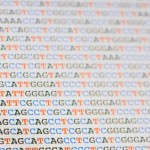So how do you re-create a virus? Or at least understand how it did what it did?
In the previous post I brought us up to 1995 when Jeffery K Taubenberger, who had received a combined MD/PhD degree at the Medical College of Virginia in 1986-87, and then went to the National Cancer Institute for pathology training, got interested in the 1918-1919 influenza virus. He used the technique known as polymerase chain reaction (PCR ) which allows a researcher to make many copies of a short segment of DNA inexpensively (If you click on the link you can experience PCR yourself). It was invented by a scientist named Kary Mullis who won a Nobel Prize in 1993 for his novel approach to genetic information.
Taubenberger and his associates went to the National Tissue Repository (NTP) and found 70 of the 100 autopsy files from the pandemic had tissue samples; 13 of these seemed candidates for recovering RNA and two actually yielded suitable RNA fragments. Data from the first case showed the virus was an H1N1 subtype and the second NTP tissue plus that obtained by Hultin in Alaska enabled the next nine years of the project, sequencing the genome of the virus.
The process is described in the Human Genome Project Information (HGP) packet online, but in brief the genetic material is broken into small chunks, each of which is used as a template, a model to be copied. Those models allow the research team to make duplicate fragments that have slight differences in which chemical bases (with abbreviations A, T, C, and G for DNA and U substituting for T in RNA) are present. Other steps, many of which are now automated, allow the re-creation of the sequence, the pattern, of the bases. In 2006 the HGP group finished enormous task of mapping the DNA sequence for all 24 human chromosomes.
In the meantime Taubenberger and his colleagues had moved into the field of reverse genetics technology, trying to find out what physical characteristics (the scientific term is phenotype) are due to a particular gene, by slightly altering the gene's structure. Their 2007 paper, available in PubMed Central, a free digital database of full-text scientific literature in biomedical and life sciences, describes their efforts to sequence the entire genome (all of the biological information needed to build and maintain a living example of that organism) of the 1918-1919 influenza virus.
Then they could perform actual experiments with viruses that had at least one of the 1918 flu virus genes. They were very careful with this work; their research was performed two labs that had been through the laborious certification process as BioSafety Level 3 or higher. The new viruses that had all eight genes from the 1918 flu were considerably more damaging, in animals at least, than those that had less than the full complement of genes.
Their conclusions, at this point, were fascinating: the 1918 virus was likely brand new, at least to mankind and came from an avian source, but which bird was involved is unknown. They haven't been able to determine yet exactly why the human infection was so deadly.
They think we're at a mid-point in understanding the worst flu pandemic and we clearly need to learn more about it.
Why? Because other influenza virus mutations will eventually be coming our way.



